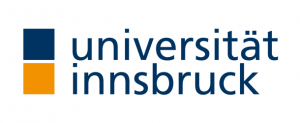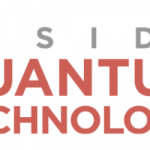Quantum News Briefs May 8: Quantum lidar prototype acquires real-time 3D images while fully submerged underwater; Quantum computer in reverse gear; “Spooky” quantum entanglement of photons doubles microscope resolution + MORE

Quantum News Briefs May 8: Quantum lidar prototype acquires real-time 3D images while fully submerged underwater; Quantum computer in reverse gear; “Spooky” quantum entanglement of photons doubles microscope resolution + MORE.
Quantum lidar prototype acquires real-time 3D images while fully submerged underwater
 Rsearchers from Heriot-Watt University and the University of Edinburghhave demonstrated a prototype lidar system that uses quantum detection technology to acquire 3D images while submerged underwater. Quantum News Briefs summarizes May 4 Pnys.org article.
Rsearchers from Heriot-Watt University and the University of Edinburghhave demonstrated a prototype lidar system that uses quantum detection technology to acquire 3D images while submerged underwater. Quantum News Briefs summarizes May 4 Pnys.org article.
The high sensitivity of this system could allow it to capture detailed information even in extremely low-light conditions found underwater.
“This work aims to make quantum detection technologies available for underwater applications, which means that we will be able to image the scene of interest in very low light conditions,” said Aurora Maccarone, a Royal Academy of Engineering research fellow from Heriot-Watt University in the United Kingdom. “This will impact the use of offshore cable and energy installations, which are used by everyone. This technology could also allow monitoring without the presence of humans, which would mean less pollution and a less invasive presence in the marine environment.”
“This technology could be useful for a wide range of applications,” said research team member Maccarone, “For example, it could be used to inspect underwater installations, such as underwater wind farm cables and the submerged structure of the turbines. Underwater lidar can also be used for monitoring or surveying submerged archaeology sites and for security and defense applications.”
Obtaining 3D images through ocean water can be challenging because it is light-limited, and any particles in the water will scatter light and distort the image. However, single-photon detection, which is a quantum-based technique, allows very high penetration and works even in low-light conditions. Click here to read complete May 4 article in Phys.org
Quantum computer in reverse gear: solving problems deemed impossible with classical computers
 Martin Lanthaler, Ben Niehoff, and Wolfgang Lechner, all from the Department of Theoretical Physics at the University of Innsbruck and the quantum spin-off ParityQC, have successfully created an algorithmic inversion through the use of quantum computers. The team began with a classical logic circuit that multiplied two numbers, and through quantum optimization methods, they were able to encode the circuit’s logic within the ground states of a quantum system. This allowed for both multiplication and factorization to be solved as ground-state problems, despite being built from irreversible operations. Martin Lanthaler further explains that the logic of the circuit can be translated into quantum mechanics, opening up new possibilities for solving problems that were once deemed impossible with classical computers.
Martin Lanthaler, Ben Niehoff, and Wolfgang Lechner, all from the Department of Theoretical Physics at the University of Innsbruck and the quantum spin-off ParityQC, have successfully created an algorithmic inversion through the use of quantum computers. The team began with a classical logic circuit that multiplied two numbers, and through quantum optimization methods, they were able to encode the circuit’s logic within the ground states of a quantum system. This allowed for both multiplication and factorization to be solved as ground-state problems, despite being built from irreversible operations. Martin Lanthaler further explains that the logic of the circuit can be translated into quantum mechanics, opening up new possibilities for solving problems that were once deemed impossible with classical computers.
Their research work described provides a model for a novel quantum computer capable of tackling the factorization problem, a key aspect of modern cryptography. This blueprint utilizes the parity architecture, which was created at the University of Innsbruck, and is compatible with all contemporary quantum computing platforms.
The team’s findings were recently published in the journal Nature Communications Physics. Financial backing for the research was given by a variety of organizations, including the Austrian Science Fund FWF, the European Union, and the Austrian Research Promotion Agency FFG, among others.
According to Martin Lanthaler, the fundamental aspect of their work involves encoding the essential components of the multiplier circuit, such as AND gates, half and full adders, with the use of the parity architecture as the ground state problem on a collection of interacting spins. This coding enables the construction of the entire circuit using repeating subsystems that can be organized on a two-dimensional grid. Multiple subsystems can be strung together to tackle larger problem instances. Rather than relying on the classical brute force method, where all possible factors are tested, quantum methods can accelerate the search process. In order to discover the ground state and solve an optimization problem, it is not necessary to survey the entire energy landscape. Instead, “tunneling” can be used to access deeper valleys, resulting in a more efficient and faster search. Click here to read University of Innsbruck announcement.
“Spooky” quantum entanglement of photons doubles microscope resolution
 Researchers at Caltech have utilized quantum entanglement to double the resolution of light microscopes. The new technique, called quantum microscopy by coincidence, involves the entanglement of photons, which act as biphotons with double the momentum of a single photon. This results in a shorter wavelength, allowing the microscope to achieve greater resolution without damaging the specimens being observed, such as living cells. The team built an optical apparatus that used a special crystal to convert photons into biphotons and demonstrated microscopic resolution and cell imaging with their innovative system.
Researchers at Caltech have utilized quantum entanglement to double the resolution of light microscopes. The new technique, called quantum microscopy by coincidence, involves the entanglement of photons, which act as biphotons with double the momentum of a single photon. This results in a shorter wavelength, allowing the microscope to achieve greater resolution without damaging the specimens being observed, such as living cells. The team built an optical apparatus that used a special crystal to convert photons into biphotons and demonstrated microscopic resolution and cell imaging with their innovative system.
In a paper published on April 28 in the journal Nature Communications, a team led by Lihong Wang, Bren Professor of Medical Engineering and Electrical Engineering, shows the achievement of a leap forward in microscopy through what is known as quantum entanglement.
Since quantum mechanics says that all particles are also waves, and that the wavelength of a wave is inversely related to the momentum of the particle, particles with larger momenta have smaller wavelengths. So, because a biphoton has double the momentum of a photon, its wavelength is half that of the individual photons.
This is key to how QMC works. A microscope can only image the features of an object whose minimum size is half the wavelength of light used by the microscope. Reducing the wavelength of that light means the microscope can see even smaller things, which results in increased resolution. Click here to read May 7 SciTechDaily article in-entirety.
Team of researchers in Canada & Europe developing a blueprint for future satellite quantum link technology
 The three-year international endeavour HyperSpace is one of the largest collaborations yet for the Canadian quantum community. It brings together a large international team of researchers in Canada and Europe that will develop a blueprint for future satellite quantum link technology, with applications in quantum cryptography and the quantum internet.
The three-year international endeavour HyperSpace is one of the largest collaborations yet for the Canadian quantum community. It brings together a large international team of researchers in Canada and Europe that will develop a blueprint for future satellite quantum link technology, with applications in quantum cryptography and the quantum internet.
The researchers include Li Qian and Professor John Sipe (Physics) at the University of Toronto, as well as partners at the University of Waterloo, Quebec’s Institut national de la recherche scientifique, and several European institutions.
“Establishing a quantum link over such large distances will involve satellites. We’d be sending a couple of photons from Earth’s orbit to ground. It’s quite a challenge and requires various areas of expertise,” says Qian.
“Our aim is to demonstrate the feasibility of the technology,” says Sipe. “By going through the ups and downs of a satellite mission that integrates the unique demands of quantum communication, we’ll have a solid blueprint in place. Ultimately, HyperSpace is about making quantum applications attractive and realistic in the near future.”
While optical fibre can be used for short-reach quantum cryptography, the distance between the two parties who want to secure quantum encryption is limited because photons inevitably scatter in optical fibre after about a hundred kilometres, degrading the transmission.
In classical optical fibre communications, simple amplifiers can boost the transmission signal, but the quantum equivalent of these amplifiers, called quantum repeaters, is still in the early stages of development. “That’s why grounded optical fibre is no longer feasible if you want to share quantum keys between Toronto and Berlin, for example,” says Qian. “A quantum satellite is a way to overcome the challenges associated with this very large distance. Such a satellite would also be necessary someday for distributed quantum computing or a quantum internet.” Click here to read original article in University of Toronto, Engineering News.





















